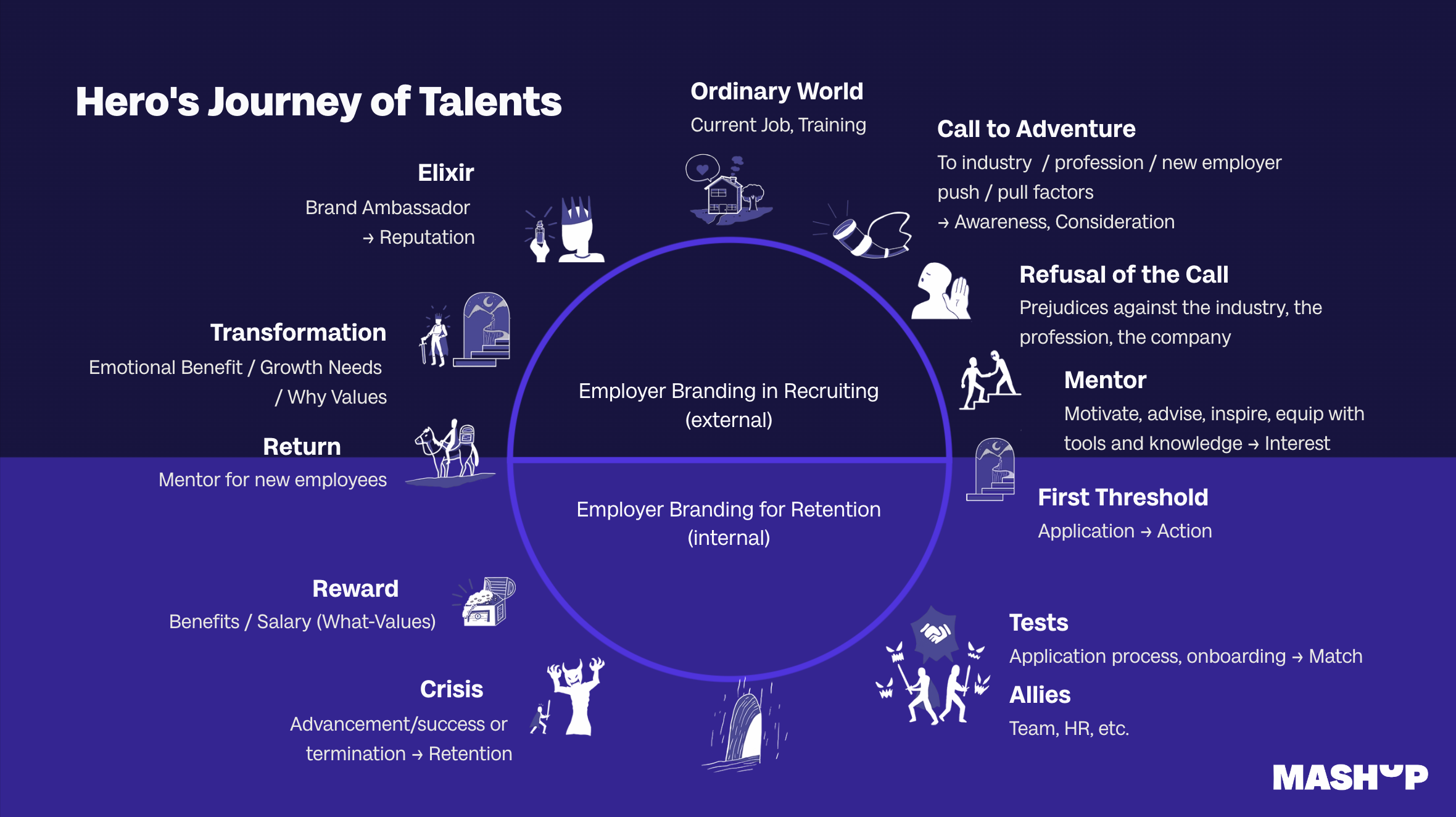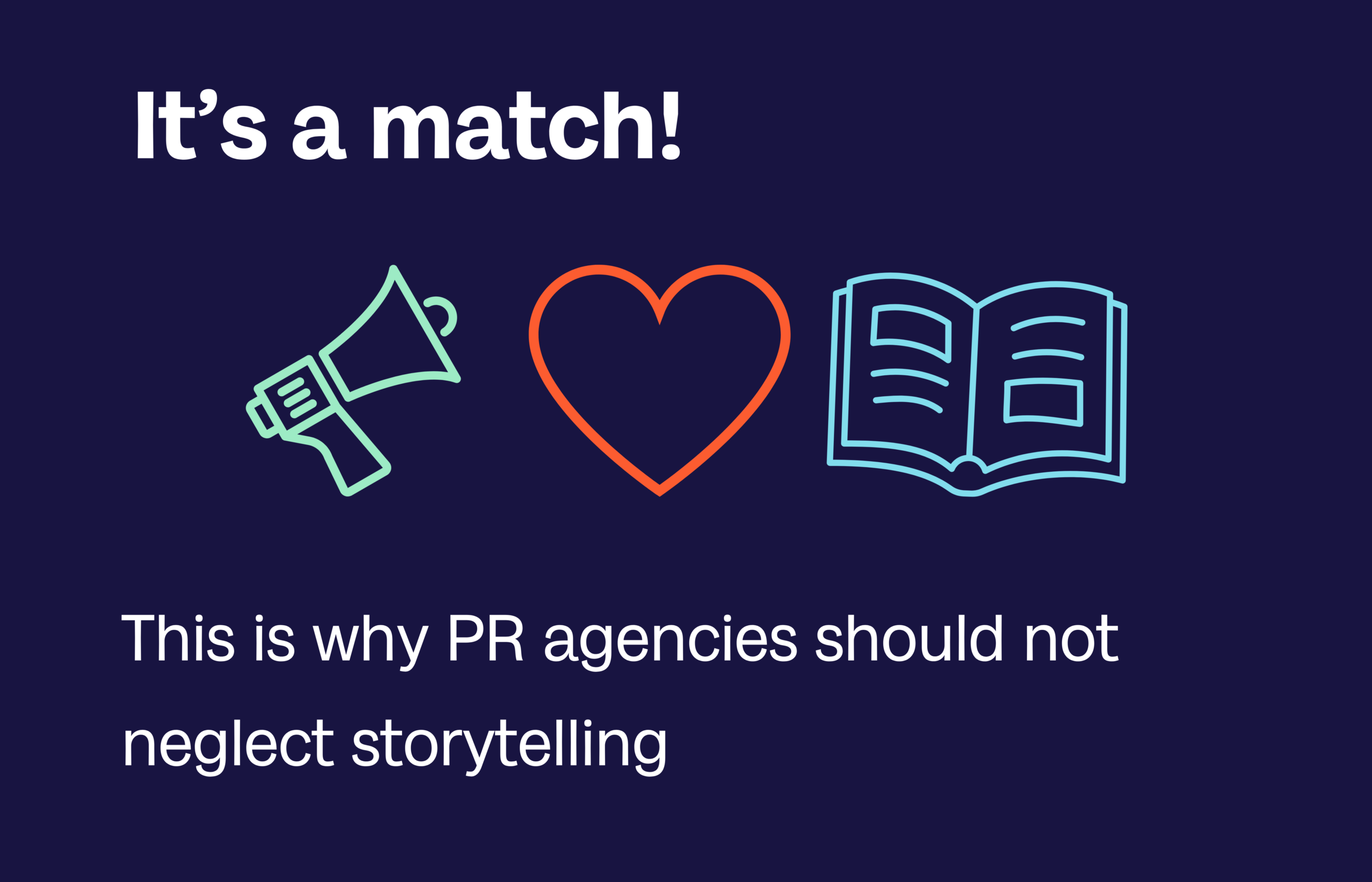Change Management – convincing Employees of new Strategies with Storytelling
Joseph Campbell’s model of the hero’s journey is one of the most influential tools in storytelling. It explains the motives and processes of a story and its hero, as they occur again and again in successful stories. Whether it’s Nemo’s father, who has to fight his way through half the ocean with Dory and other companions to save his son, or Marty McFly, who has to travel through several eras to get time back on track – at its core, every story revolves around leaving the familiar world and having to pass several tests for the good of all, many or even just one person. It is always about living through a change, motivated by the vision of a better world or personal success.
However, what we love in films, books and series causes concern and anxiety when it comes to transformation in companies: the uncertain outcome. With the help of storytelling, uncertainty can be transformed into a clear thread running through the company’s future history. Through the story we tell about the change, we create both an intellectual and emotional connection with the information.
The hero’s journey as a strategy tool
In change management using the storytelling approach, we can use the hero’s journey to structure the individual phases both organizationally and communicatively.
- The familiar world: Where do we stand as a company? What does our comfort zone look like internally and externally?
- The call: What is the trigger for organizational change?
- The refusal: Which routines, processes and structures were particularly popular and must now be abandoned or changed? How can we recognize and appreciate this concern in particular, but also give special reasons for the background to the change?
- The mentor: What companions do we have on this path and what values do they represent?
- Crossing the first threshold: at what point is there no turning back?
- Tests & allies: Where do we expect friction and resistance? What allies are there internally and externally to overcome these hurdles?
- Advancing to the deepest cave: Where do we enter completely unknown / dark terrain? How do we overcome this?
- The crucial test: What is the biggest crisis we could encounter along the way?
- The reward: What awaits us as a company, but also each individual employee, at the end of the exams?
- Way back & resurrection: To what point do we have to get to in order to have gone through most of the process?
- Resurrection: How can we visualize this success at the given time?
- Return with Elixir: What have we learned about ourselves as an organization through the process? What can we take away for the future and possibly pass on?
The hero’s journey as a dialog tool

Change management is increasingly understood as continuous and organic bottom-up development. With this in mind, it is important to listen to the company. The hero’s journey can also be a helpful tool for conversations to write the future story together with several voices of an organization. This increases motivation and perseverance on the employee side – as is also the case with the top-down approach.
With the help of “Corporate Campfires”, experiences, obstacles, successes, wishes, visions, etc. – i.e. the individual stages of personal hero’s journeys – are collected in small, moderated workshops. The shared narrative about a company’s past and identity then serves as the basis for a change story in which everyone is on board.
Share this article
Related articles

11 March 2024







